In the rapidly evolving landscape of artificial intelligence, Microsoft Azure has positioned itself as a powerful platform for organizations looking to harness the potential of generative AI. As we navigate through 2025, Azure’s comprehensive suite of generative AI services offers businesses the tools they need to innovate and transform their operations. Let’s explore Azure’s generative AI ecosystem, examining how these services can be implemented in real-world scenarios.
Introduction to Azure’s Generative AI Ecosystem
Microsoft’s approach to generative AI is built around three core pillars: powerful foundation models, a robust development platform, and enterprise-grade infrastructure. This integrated ecosystem allows organizations to develop, customize, and deploy generative AI solutions with confidence.
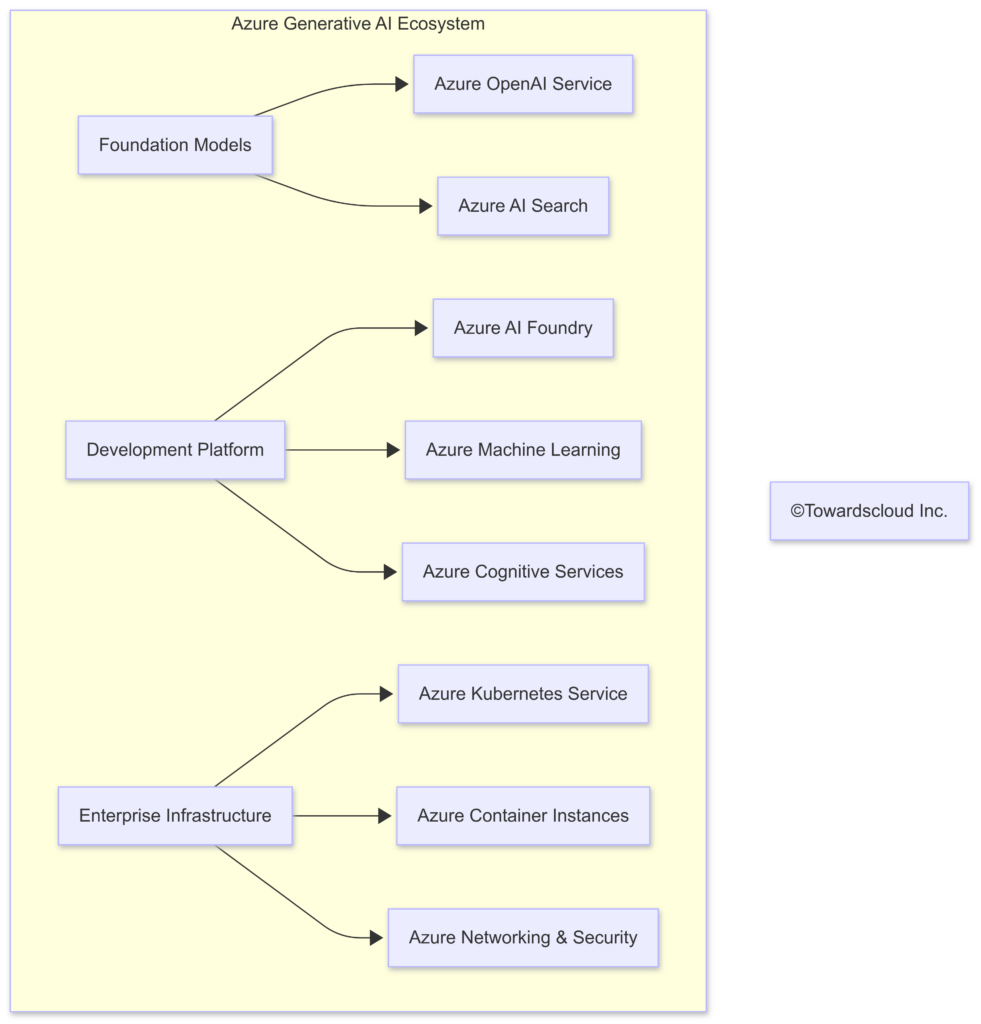
Foundation Models: Azure OpenAI Service
At the heart of Azure’s generative AI offering is the Azure OpenAI Service, which provides access to powerful large language models (LLMs) including GPT-4 Turbo, GPT-4o, and Claude models from Anthropic. These models can be accessed through a secure, enterprise-ready API that integrates seamlessly with other Azure services.
Real-World Example: Healthcare Documentation
Consider Memorial Healthcare Network, a fictional healthcare provider struggling with physician burnout due to excessive documentation requirements. By implementing Azure OpenAI Service with appropriate guardrails, they created an AI assistant that:
- Listens to patient-doctor conversations (with consent)
- Generates draft clinical notes that follow standard medical formats
- Highlights key medical information for physician review
- Integrates with their existing electronic health record system
The result? Physicians saved an average of 2 hours per day on documentation, allowing them to see more patients and reduce burnout rates by 40%. The implementation required careful attention to privacy controls and human oversight to ensure accuracy.
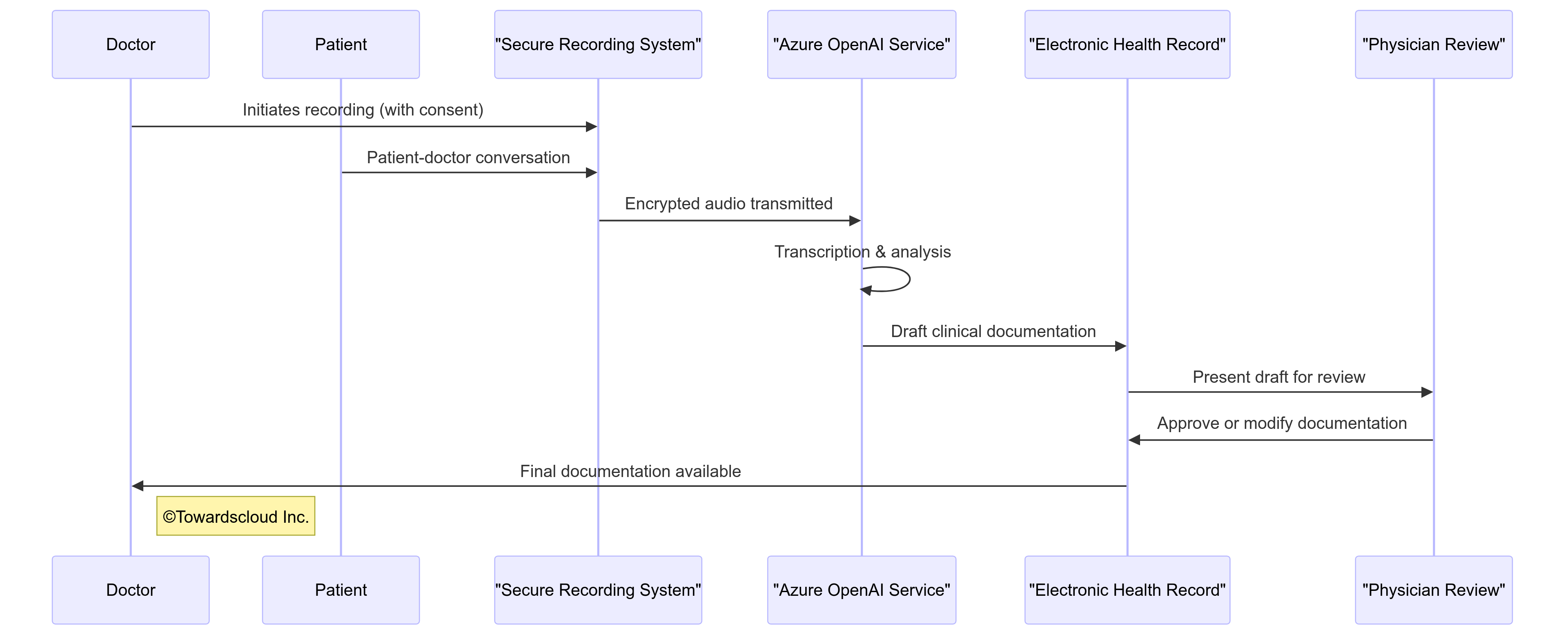
Key Capabilities of Azure OpenAI Service
- Deployment Options: Organizations can choose between fully-managed cloud deployments or private deployments in their own Azure subscription.
- Content Filtering: Azure OpenAI includes built-in content filtering systems to help reduce the generation of harmful content.
- Fine-tuning and Customization: Models can be adapted to specific domains and tasks through fine-tuning with proprietary data.
- Responsible AI Tools: Microsoft provides comprehensive guidelines and tools for implementing AI responsibly, including the Azure AI Content Safety service.
- Multimodal Capabilities: Support for processing and generating both text and images with models like GPT-4V.
Azure AI Foundry (formerly AI Studio): Streamlining Development
Azure AI Studio provides a unified environment for developing, testing, and deploying generative AI applications. This integrated platform simplifies the process of building AI solutions, from prompt engineering to model deployment.
Real-World Example: Financial Services Chatbot
GlobalBank, a fictional multinational financial institution, needed to enhance their customer service capabilities while maintaining strict compliance with financial regulations. Using Azure AI Studio, they created a sophisticated banking assistant that:
- Answers customer questions about products and services
- Helps customers troubleshoot common banking issues
- Provides personalized financial insights based on account data
- Maintains a comprehensive audit trail for compliance purposes
The development process in AI Foundry included:
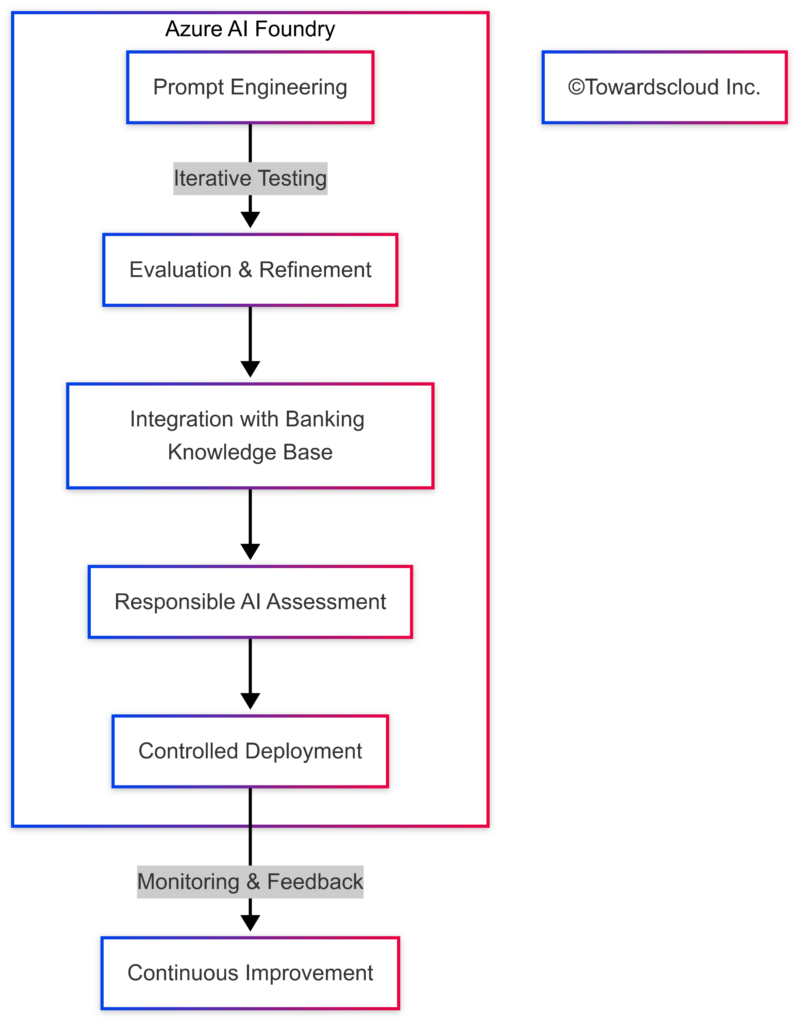
Vector Search and Retrieval Augmented Generation (RAG)
One of the most powerful capabilities in Azure’s generative AI toolkit is the combination of Azure AI Search (formerly Azure Cognitive Search) with Azure OpenAI Service to implement Retrieval Augmented Generation (RAG) patterns.
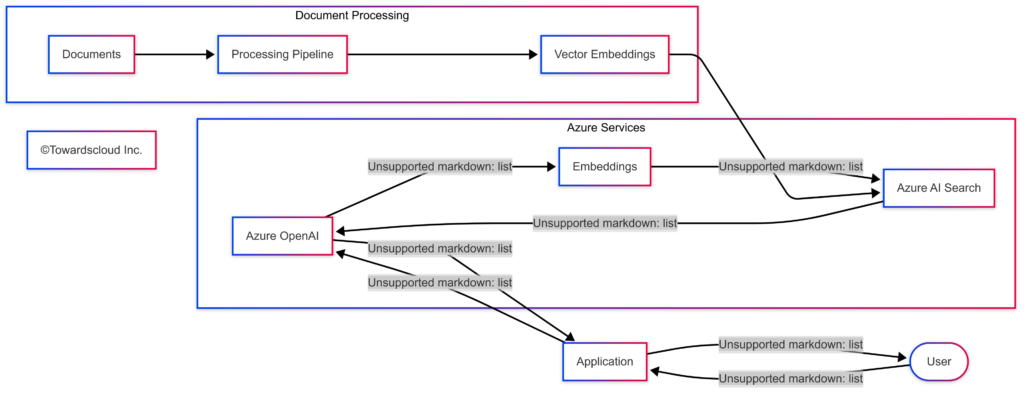
Real-World Example: Technical Support Knowledge Base
TechSolutions Inc., a ficticious software company with complex enterprise products, implemented a RAG system using Azure AI Search and Azure OpenAI Service to transform their technical support operations:
- They ingested thousands of technical documents, support tickets, and product manuals into Azure AI Search
- Support engineers interact with an AI assistant that retrieves relevant documentation on demand
- The system generates detailed solutions based on past similar issues and product documentation
- Engineers review and refine the AI-generated responses before sending to customers
The results were impressive:
- 65% faster resolution times for complex technical issues
- Improved consistency in troubleshooting approaches
- Better knowledge transfer between experienced and junior staff
- Significant cost savings in support operations
Enterprise-Grade Infrastructure
Azure’s enterprise infrastructure ensures that generative AI deployments are secure, scalable, and compliant with industry regulations.
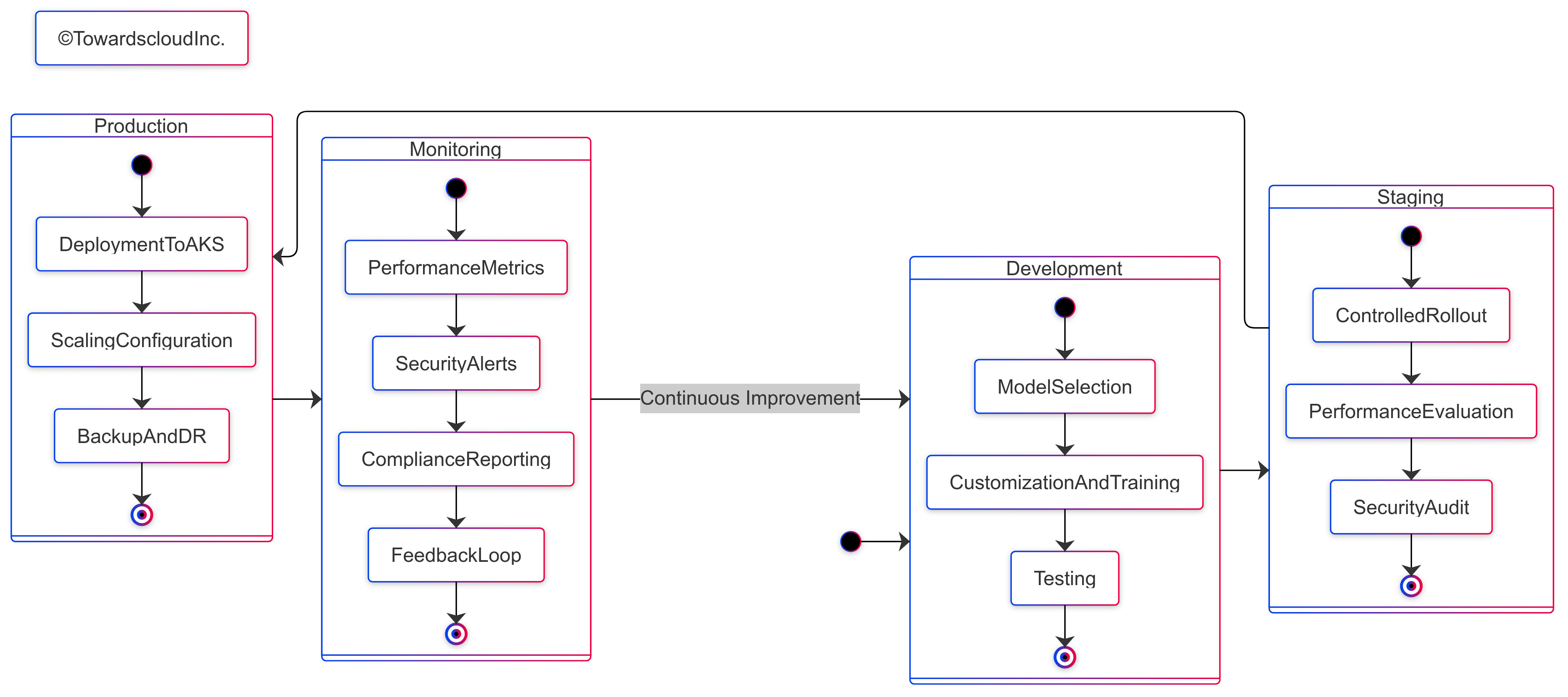
Key infrastructure components include:
- Azure Kubernetes Service (AKS): For deploying and scaling AI workloads
- Azure Machine Learning: For model training, management, and MLOps
- Azure Private Link: For secure network isolation
- Azure Key Vault: For managing secrets and encryption keys
- Azure Monitor: For comprehensive observability
Specialized Azure AI Services
Beyond the core generative AI platform, Azure offers specialized services that enhance and extend generative AI capabilities:
Azure AI Vision
Azure AI Vision enables applications to understand and analyze visual content, now with generative capabilities that can:
- Generate detailed descriptions of images
- Extract and analyze text from images
- Identify objects and scenes with high accuracy
- Create accessible experiences for visually impaired users
Azure AI Speech
Azure AI Speech services now incorporate generative AI for:
- Natural-sounding text-to-speech with emotional inflection
- More accurate speech recognition across accents and environments
- Real-time translation across over 100 languages
- Voice cloning capabilities for authorized use cases
Azure AI Language
Azure AI Language leverages generative capabilities for:
- Sophisticated sentiment analysis and entity extraction
- Document summarization and key information extraction
- Question answering systems based on your content
- Multi-language support for global applications
Comparative Analysis: Azure vs. Other Cloud Providers
How does Azure’s generative AI offering compare to other major cloud providers? Let’s examine the key differences:
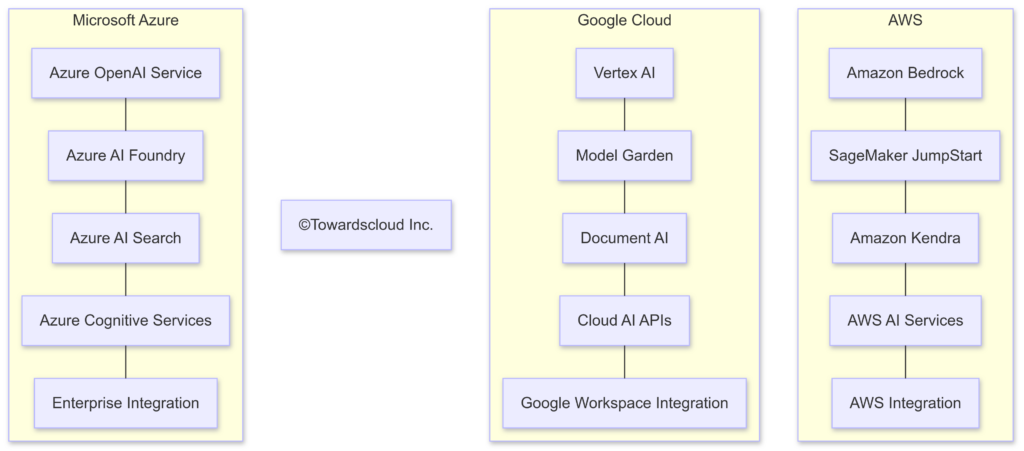
Azure’s Differentiators
- Microsoft Copilot Integration: The deep integration of generative AI into Microsoft 365 applications provides a unique advantage for organizations already invested in the Microsoft ecosystem.
- Enterprise Focus: Azure’s generative AI services are designed with enterprise requirements in mind, including robust governance controls, compliance features, and integration with existing business systems.
- Developer Experience: Azure AI Studio offers an intuitive development environment that accelerates the creation of generative AI applications.
- Model Access: Azure provides access to a broad range of models including OpenAI’s GPT models, Anthropic’s Claude, and Microsoft’s proprietary models like Phi-3.
- Hybrid Deployment Options: Azure offers flexible deployment options including on-premises and edge capabilities through Azure Arc.
Implementation Best Practices
Based on successful Azure generative AI deployments, here are key best practices to consider:
1. Start with a Clear Business Problem
Begin with a well-defined problem that generative AI is uniquely positioned to solve. For example, a legal firm might focus on contract analysis, while a retailer might prioritize product recommendation systems.
2. Implement Proper Data Governance

3. Establish Responsible AI Guardrails
Implement comprehensive safeguards:
- Content filtering to prevent harmful outputs
- Human review processes for high-risk scenarios
- Robust testing across diverse user scenarios
- Feedback mechanisms to improve model performance
- Transparency about AI use to end users
4. Focus on Integration
Ensure your generative AI solutions integrate seamlessly with:
- Existing business applications and workflows
- Authentication and identity management systems
- Data sources and knowledge bases
- Monitoring and analytics platforms
5. Build Expertise Incrementally
Start with smaller projects to build organizational expertise before tackling more complex implementations:
- Begin with straightforward use cases like internal documentation assistance
- Gradually expand to more sophisticated applications
- Create a center of excellence to share learning across the organization
Cost Considerations
Azure’s generative AI services use a consumption-based pricing model. Key cost factors include:
- Model Selection: More powerful models like GPT-4 cost more than smaller models
- Usage Volume: Costs scale with the number of tokens processed
- Storage Requirements: Vector databases and document storage add to costs
- Compute Resources: Required for custom model training and deployment
Cost Optimization Strategies

Conclusion
Azure’s generative AI services represent a comprehensive ecosystem for building, deploying, and managing AI-powered applications across the enterprise. With its strong focus on security, governance, and integration with existing business systems, Azure provides a solid foundation for organizations looking to leverage generative AI while managing the associated risks.
As we’ve seen through real-world examples, the potential applications span industries and use cases, from healthcare documentation to financial services and technical support. The key to successful implementation lies in starting with clear business problems, establishing appropriate guardrails, and building expertise incrementally.
For organizations already invested in the Microsoft ecosystem, the integration between Azure’s generative AI services and productivity tools like Microsoft 365 offers a compelling advantage. However, even for those using multiple cloud providers, Azure’s enterprise-grade infrastructure and comprehensive AI platform make it a strong contender for generative AI workloads.
As generative AI continues to evolve, Microsoft’s ongoing investments in research and development ensure that Azure will remain at the forefront of this transformative technology, providing organizations with the tools they need to innovate and compete in an AI-powered future.
This article is part of our ongoing series exploring cloud technologies for generative AI. For more insights on implementing cloud solutions in regulated environments, visit TowardsCloud.com.